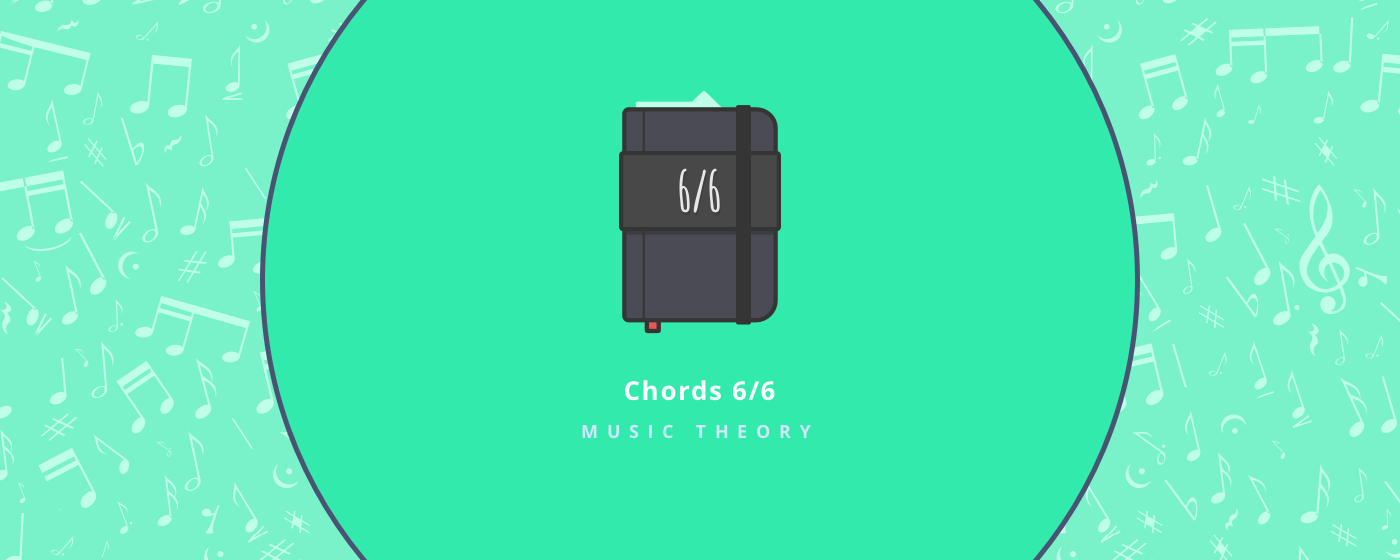Hi all,
This is the last post in a series of 6 posts dedicated to 3 notes chords. Please follow these links to get a quick access to the previous posts
Part 1 | Part 2 | Part 3 | Part 4 | Part 5
Today, we'll do 2 things : we'll learn how to name chords, and we'll make a recap of all the chords we learnt.
Naming chords
Now that we know all those chords, we want to be able to give them a short name. (we don't want write "D major chord in first inversion" on a score, do we ?)
As usual, notation depends on context. You won't use the same tool to analyse a Bach chorale [1], analyse a pop song[1:1], or notate a jazz standard[1:2]...
For now, we'll focus on pop/jazz chord notation.
So, how do we name a chord ?
It's really simple : the name depends on the root, the quality (major, minor, augmented, diminished or suspended), and the inversion.
Each quality correspond to a different suffix.
Triads in root position
-
A major triad in root position is simply notated with one capital letter : the root.
For example, a major triad of C in root position is just notated C. A F♯ major triad in root position is notated F♯.
So there is no suffix for a major chord. -
A minor triad in root position is simply notated with the root in capital letter and the lower case letter "m".
For example, a minor triad of D in root position is just notated Dm. An A♭ major triad in root position is notated A♭m. The suffix for minor chords is "m" -
An augmented triad in root position is simply notated with the root in capital letter and the "+" sign.
For example, an augmented triad of E♭ in root position is notated E♭+. A B augmented triad in root position is notated B+.
The suffix for augmented chords is "+" -
A diminished triad in root position is notated with the root in capital letter and the "°" sign.
For example, a diminished triad of F in root position is notated F°. A G♭ diminished triad in root position is notated G♭°.
The suffix for diminished chords is "°" -
A sus4 chord in root position is notated with the root in capital letter and the letters sus4.
For example, a sus4 chord of B♭ in root position is notated Bsus4. An A♯ sus4 chord in root position is notated A♯sus4.
The suffix for sus4 chords is "sus4"
Triads in first and second inversion
When a triad (or a sus4 chord) is not in root position (that is to say : the bass note is not the root), you write the root in capital letter, add the suffix, write slash / and then the bass note.
For example,
-
an E♭ major chord in first inversion is notated E♭/G
-
a D minor chord in first inversion is notated Dm/F
-
an A augmented chord in second inversion is notated A+/E♯
-
an E diminished chord in second inversion is notated E°/B♭
Recap
Here is the recap of every single triad we could build (+ sus chords) out of the 5 kinds of chords we studied. (major, minor, augmented, diminished, sus)
I chose to spell the black keys with flats. The other way (spell black keys with sharps) is absolutely right too.
Unused chords
Note that there is no chord like c-f♭-g (that is in fact a C major chord) or c-eb-g# (that is an A♭/C chord) despite the fact that those are triads, since they are made out of thirds stacked one on the other.
That's because we usually only focus on the 5 chord types we learnt (major, minor, augmented, diminished and sus), and :
-
major chords are made out of the notes belonging to the major scale of the root
-
minor chords are made out of the notes belonging to the minor scale of the root
-
augmented chords are made out of the notes belonging to the augmented scale of the root
-
diminished chords are made out of the notes belonging to the major scale of the root
-
suspended chords are made out of the notes belonging to the major scale of the root
And there is no (c-e𝄫-g𝄫)
And because we only use those combinations:
- ♮ with ♭
- ♮ with ♯
- ♭ with 𝄫
- ♯ with 𝄪
Enharmonic spelling
The sound of D♭°/A♭♭ is the same as the sound of C♯°/G and the later one is the easiest to spell, so sometimes, we use one instead of the other.
The sus2 chord
Another little thing : I just want you to think about the sus2 chord. Isn't it an inversion of a sus4 chord ? :) So, Csus2 is, in the end like Gsus4/C. That is why I never use sus2 chords. But that's only a personal taste.
Here ends our journey into basic chords.
Now we know :
- what a triad is
- we know the 5 common triads
- we can spell a triad
- we can recognise the sound of those triads
- we can name a triad
But there is more (way more...) to know about chords, and there is some exiting stuff !
- 4 note chords
- upper extensions
- harmonic functions of chords
- voicing
- and more...
See you soon
Sebastien
Articles on this series about chords:
-
Part 1: Introduction to chords, triads, and major chords in root position
-
Part 6: How to name the chords
